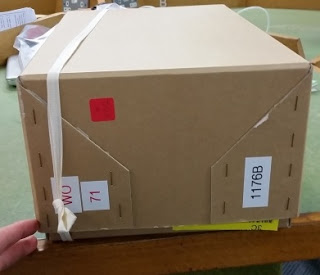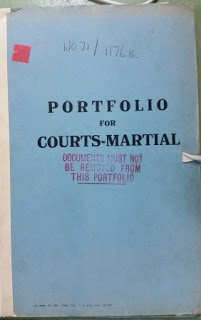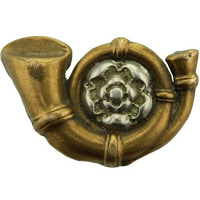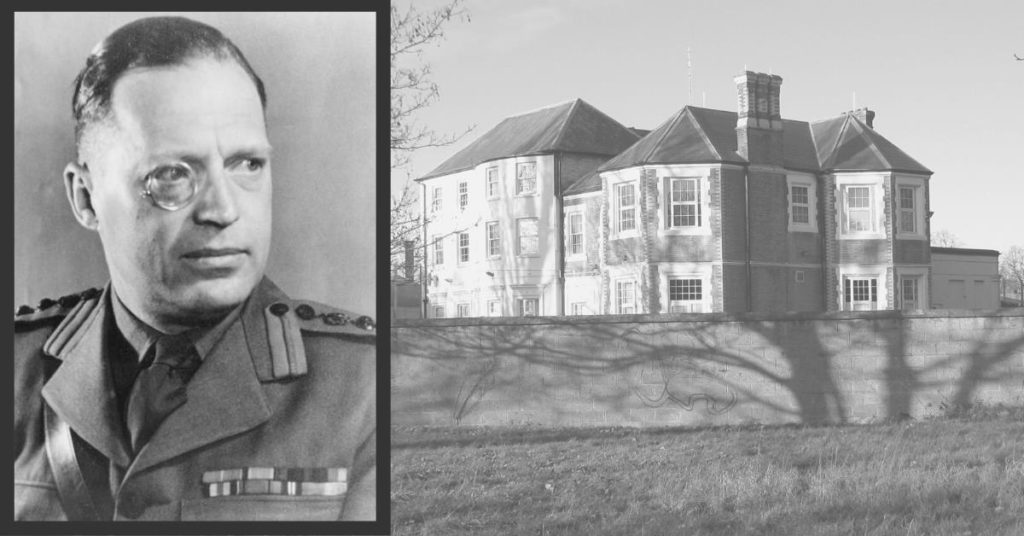Every once in a while, a few more bits of information about Robin William George Stephens float my way. The latest batch come from an odd assortment of sources.
MI5 – Bad Nenndorf & Robin W.G. Stephens
The MI5 website has had a bit of a face-lift and they now include a whole page dedicated to the post-WWII CSDIC (Combined Services Detailed Interrogation Centre) at Bad Nenndorf and its Commandant Robin Stephens. They’ve clearly sifted through Stephens’ court martial documents (National Archives) and distilled their version of the saga. It doesn’t totally jive with Ian Cobain’s book, Cruel Britannia and, as with Col A.P. Scotland and the London Cage, I wonder at their protestations of innocence.
MI5 still operates under strict rules for interviewing and questioning individuals. All MI5 staff are trained in the requirements of the Human Rights Act before they are deployed to operational posts, and the Service has rigorous procedures for ensuring that the law and the government’s consolidated guidance on the detention and interviewing of detainees overseas is followed.
My question would be… what happens to detainees between interrogations, when MI5 staff are not present? It would be the same question I would direct at Col. Scotland and Col. Stephens.
Interesting too that MI5 has presented a defence of Stephens even though he was not working for MI5 whilst commandant of Bad Nenndorf. I suppose that any taint of violence at Bad Nenndorf would naturally call into question interrogation tactics at MI5s wartime interrogation centre at Camp 020. Perhaps it is a matter of avoiding guilt by association.
But we are talking about Stephens tidbits. On the MI5 page, it notes that:
Stephens’ monocle, by the way, was not some theatrical affectation: it was the result of his exposure to Italian mustard gas while working as a volunteer with a British Red Cross team in Abyssinia in the mid-1930s.
This would appear to be a reference to the Second Italio-Ethiopian War (1935-1939), a rather messy conflict from what I can gather. A quick search reveals this International Red Cross page which references the use of mustard gas by the Italians (in contravention of the League of Nations agreements) and attacks on the Red Cross.
I would dearly love to get my hands on Stephens personnel file from MI5 but… that would seem to be a long shot. Maybe one day…
Court Martial of Robin W.G. Stephens

The last time I was at the National Archives in Kew (2014), Stephens’ court martial file was out at a “department office”. Given MI5s revamped site, I’m guessing that they may have had the file.
This past month, however, I was again at the Archives and, the court martial file was available! Excellent news, albeit daunting. The court martial file was contained within a rather thick box. Given that Josef Jakobs’ court martial file was a slim 1 cm folder, I wasn’t quite prepared for the thickness of Stephens’ file.
I focused my attention on Stephens’ testimony, hoping for some tidbits of information, and there were a few.
On the first day the court martial, Stephens asked that his name be correctly recorded. They initially had Robin William Granor Stephens, a name that has shown up in the London Gazette as well. Stephens emphasized that his third name was George, not Granor. Later, during the case for the defence, Stephens’ lawyer ran him through some highlights from his career. My notes in square brackets.

Q. Colonel Robin William George Stephens OBE — I should have said Lieutenant Colonel; you were formerly a Colonel, were you? A. Yes. [So, did he get demoted or??]
Q. Are you 47 years of age? A. Yes.
Q. And were you educated at Dulwich College? A. Yes.
Q. And in February 1918 did you pass into the regular army? A. Yes. [Interesting that reference is made to the Regular Army and not to the Indian Army]
Q. I think you were actually commissioned in April 1919? A. Yes. [Helpful tidbit]
Q. And did you remain in the regular army until 1932? A. That is correct.
Q. I think you served in six campaigns from the Afghan War of 1919 onwards? A. Yes.
Q. Were you Mentioned in Dispatches in 1922 by the Commander-in-Chief? A. Yes.
Q. And I believe you received the thanks of the Government of India for services in Southern Arabia; is that correct? A. Yes. [He had spent time in Oman]
Q. And did you leave the army voluntarily with a gratuity in 1932? A. That is right.
Q. And then for a time you read for the Bar; is that correct? A. Yes. [Helpful confirmation of this]
Q. And then you, I believe, organised the British Ambulance Service in Ethiopia? A. Yes. [This is new information but confirms what MI5 says about Stephens and his monocle. Makes me wonder if the British Red Cross would have the archives for the British Ambulance Service…]
Q. We can probably skip the further details of your career until in 1937 or 1938 did you join the department known as M.I.5? A. Yes. [This is kind of a vague date.]
…A. Could I add I served in Abyssinia in the Italian War?…[Stephens interjected this tidbit but… it would seem to be a duplication of the British Ambulance Service statement above. Unless he served in another capacity during the Italian War?]
Q. Now, until the war were you mainly engaged in a section of M.I.5 which dealt with the activities of what is known as the NSDAP, in England? A. Yes.
Q. What is that? A. It is the Partei which was formed, which has two branches; one is the NSDAP, which is Hitler’s organisation, and the other was the DAF. [Hmmm… I have found nothing that would indicate the NSDAP (Nationalsozialistische Deutsche Arbeiterpartei – i.e. the Nazi Party) or the DAF (Deutsche Arbeitsfront – German Labour Front) operated in England. There were fascist parties, many of them, in England, but none seem to be specifically linked to the German version.]
Q. And from September 1939 were you responsible for the section which dealt with the liquidation of the Nazi Party elements in this country? A. Yes. [Perhaps this is a reference to him being involved in rounding up Nazi sympathizers or suspicious Germans? The term “liquidate” is unfortunate as it brings to mind as it can mean to “eliminate, typically by violent means; kill”.]
Q. And did that continue to the summer of 1940? A. That is correct, yes. [I believe Camp 020 opened in June or July 1940, so this would jive with that.]
Q. And did that involve large numbers of interrogations at various internment camps and at this special branch of Scotland Yard? A. Yes. [This would suggest that in rounding up suspicious German folk or sympathizers, he was involved in their interrogation.]
Q. Well, then as time went on after the collapse of France and the experience of the activities of the Fifth Column in Holland, were you concerned with Sir Oswald Mosely and his supporters? A. Partly with them, but still I was directing my energies to the espionage threat which then arose. We had liquidated the NSDAP and the DAF which were the cells for German penetration. The next threat was active espionage from the other side. [So, he does make a distinction between the Nazi sympathizers and the BUF. I had wondered.]
Q. Then as a result of consultation between yourself and Lord Swinton, who was then responsible to the Cabinet for security arrangements, were you designated as Chief Intelligence Officer of a new establishment, the camp which ultimately was set up at Ham? A. Yes, under my chief at M.I.5. [It would appear from this that he was only Chief Intelligence Officer initially and not Commandant. We do know that George F. Sampson was the one tasked with setting up the camp, and was the first commandant.]
Q. And did that camp become known as Camp 020? A. Yes.
Q. Actually, it was set up on the 23rd June 1940? A. That is correct. [On Stephens’ 40th birthday!]
Q. And in November of 1940 in addition to being Chief Intelligence Officer did you become Commandant of that camp? A. Yes. [Wondering why he replaced Sampson as Commandant. Sampson still remained as a interrogator…]
Q. And did you so remain until July of 1945? A. Yes.
Q. In the course of those years at some time, I suppose, you became a full colonel; is that correct? A. Yes, in 1944.

There is more information in Stephens’ testimony about his time at Camp 020, but I will leave that to another blog post.
There was also a passing reference to Stephens military service in Roland A.F. Short’s testimony. Short had served under Stephens as an interrogator both at Camp 020 and Bad Nenndorf. Short believed that Stephens served with the KOLYI, which would appear to be an abbreviation for King’s Own Light Yorkshire Infantry. I haven’t come across anything that would corroborate this. Within the London Gazette entries for Stephens, he is always simply “Territorial Army” with no regimental affiliation.
Military Service Record for Robin W.G. Stephens
A few years ago, I applied for the military service record of Lt. Col. William Edward Hinchley Cooke, a colleague of Robin Stephens. The file, while not large in size, did provide a few tidbits of information. The problem is… unless one is a direct next-of-kin (parent, child, spouse, etc.) one needs to provide a death certificate. Hinchley-Cooke’s death is well documented but that of Robin Stephens still eludes me. All we know is that he retired in 1960 and by the time his wife passed away in 1990, Stephens was already deceased. However… the service record requrest form also allows the death certificate requirement to be waived if the person in question was born more than 116 years ago. Voila… Stephens was born in 1900 and is now outside the confines of that limit. Some digging in the London Gazette also provided me with his service number. I have submitted an application and will await the results with bated breath.
